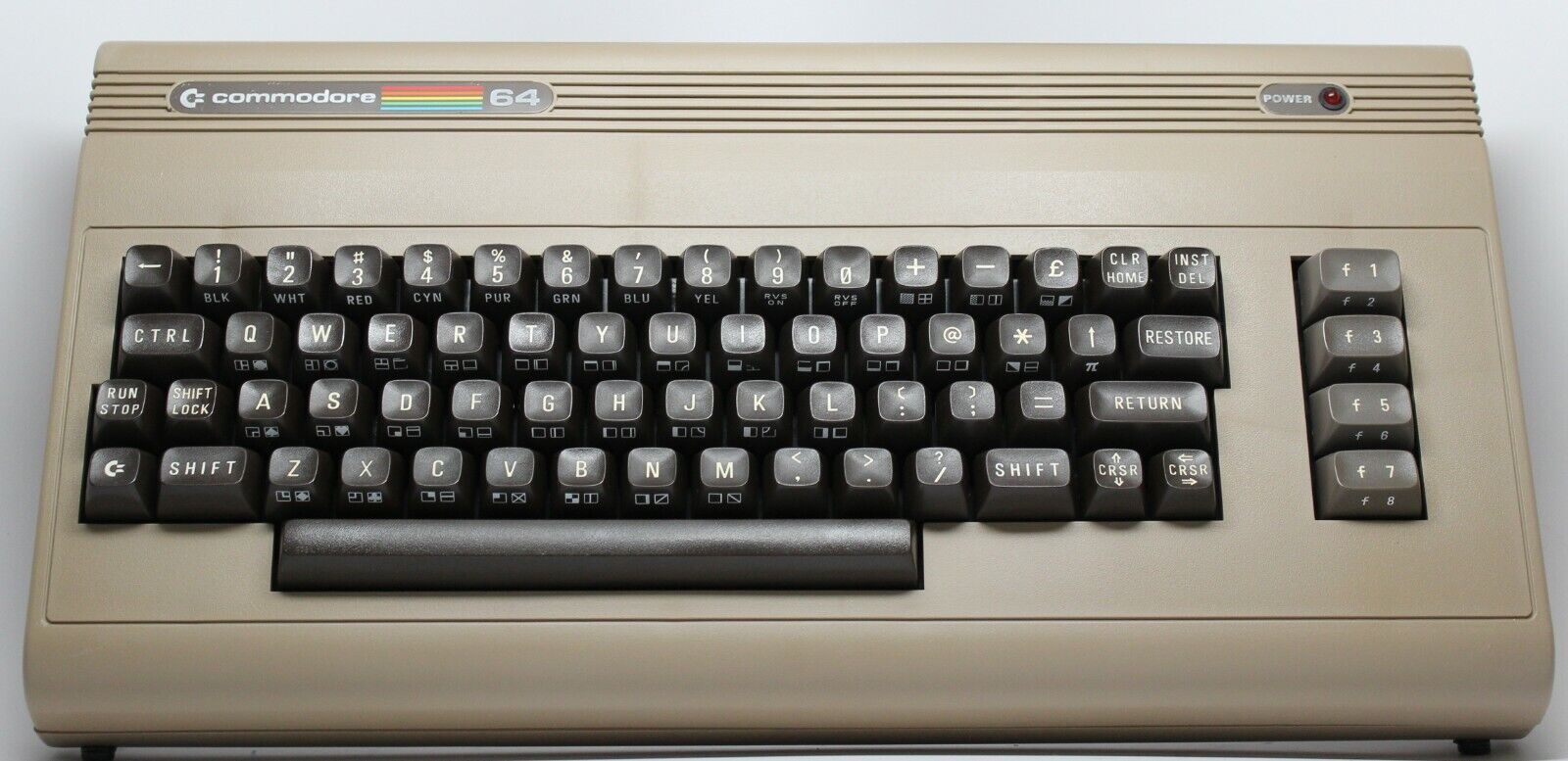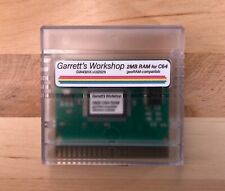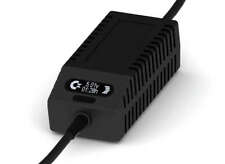Commodore 64 Computer Restored, Recapped, Fully Tested, Cleaned. Dust Free. NTSC For Sale

When you click on links to various merchants on this site and make a purchase, this can result in this site earning a commission. Affiliate programs and affiliations include, but are not limited to, the eBay Partner Network.
Commodore 64 Computer Restored, Recapped, Fully Tested, Cleaned. Dust Free. NTSC:
$279.99
Note: DO NOT USE AN ORGINAL COMMODORE 64 POWER SUPPLY with this computer. I recommend one from Electroware as I\'ve tested their power supplies extensively and they\'re great. Other modern replacements are probably also good however, The original power supplies can fail in ways that aren\'t detectable, until your computer is dead from over voltage. From a wise guru Ray Carlsen: \"Although the Commodore PS was designed with a current capacity of 1.5 Amps, it runs hot inside with a load of less than 1 Amp (C64 with cart plugged in) because it\'s a sealed-in-epoxy unit. This prevents user tampering and electric shock hazard but it holds the heat in and \"cooks\" those internal components eventually. It cannot be repaired if it fails and the heat cannot easily escape except through the epoxy case which is a relatively poor conductor of heat. All that said, look how long most of those power supplies have lasted. There are several modes of failure for a linear PS. The electrolytic (filter) capacitors eventually dry out inside resulting in excessive \"ripple\", an AC component on what should be pure DC voltage. That often results in a lower than normal DC output which the computer cannot tolerate. It will fail to boot or run properly but will suffer no damage; it just doesn\'t work. If any PS component fails by opening up, the output voltage drops to zero, again without damage to the computer. The worst and most destructive PS failure is caused by a bad regulator that shorts out internally so its input voltage (more than 11 volts) is passed directly to its output! Most semiconductors (transistors and IC\'s) inside the computer run at 5 volts DC and can withstand a minor voltage overload without damage... but some cannot. The eight RAM chips in a C64 are especially vulnerable to over-voltage damage. Those IC\'s have an \"absolute maximum rating\" of 5.5 volts and are quickly destroyed above that maximum level. I\'ve seen several CBM bricks that always worked normally when cold but would output excessive voltage when warm. Those supplies went on to damage several users computers because the owners didn\'t realize the fault was repeatable. Any PS brick failure means it must be replaced, preferably with something better if available.\"
This version of the C64, sometimes called the \"Long Board\" is found in most C64s found in North America, as they the original process ICs and the original chip count. The SID sound chip here is the 6581 vs the 8580 more commonly found in the EU. The two have different sounds somewhat and music composers made soundtracks with one or the other in some cases. Both SIDs are fantastic, but they do sound somewhat different and some people prefer one over the other.
Electrolytic capacitors wear/dry out over time, especially ones over 30 years old, so replacing them prevents the most common failures and prevents additional damage from occurring, it is for this reason that I replace these capacitors in all Atari 2600 hardware that I sell. Any MOS logic chips, other than the custom video generator or other customer chips have been proactively replaced.The plastic case pieces have been meticulouslyscrubbed and cleaned. System board has been fully cleaned of any grime from age and excess flux from the original manufacturing removed. Dust free! 60 day returns for any reason, with no cost on return shipping (Domestically in the US). Buy with confidence.
Why do I test for 24 hours? I\'ve seen a lot of C64s pass testing fine and then around hours 8-14 something will fail, the system will lock-up, etc. Sometimes this requires a few days to track down what is an intermittentfailure. The computer might appear to be fine most of the time under, but then fail seemingly randomly on occasion. Thus, I take extra time to ensure that everything is running 100% before listing.
Computer only. No power supply, cables, controllers etc.
4.7nF capacitor installed at C38 to correct the amount of force needed for that key to function.Transient Voltage diode installed from +5V regulated DC to ground in case of voltage spikes from a power supply failure.
Computer has been completely torn down, new capacitors installed, cleaned and reconditioned. System has been burned-in tested for 24+ hours and passed testing afterward. Plastic case parts have been taken apart, scrubbed, soaked, scrubbed again and dried to remove all contaminates and dust from use prior to reassembly. See pictures for detail. All parts have various scratches, blemishes and cosmetic deviations, to be expected of hardware of this age. None of the cosmetic flaws affect performance.”

Related Items:
GW4301A -- 2MB RAM for Commodore 64 C64 -- geoRAM compatible -- incl. case
$45.00
GW4301A -- 2MB RAM for Commodore 64 C64 -- geoRAM compatible -- Made in USA
$35.00
Commodore 128 Power Supply - C128 PSU, New Design, OLED display, Touch sensor
$79.99
![]()
Documentation
- AIX Local Security Checks
- Backdoors
- CentOS Local Security Checks
- CGI abuses
- CISCO
- Databases
- Debian Local Security Checks
- Default Unix Accounts
- Denial of Service
- Fedora Local Security Checks
- Finger abuses
- Firewalls
- FreeBSD Local Security Checks


